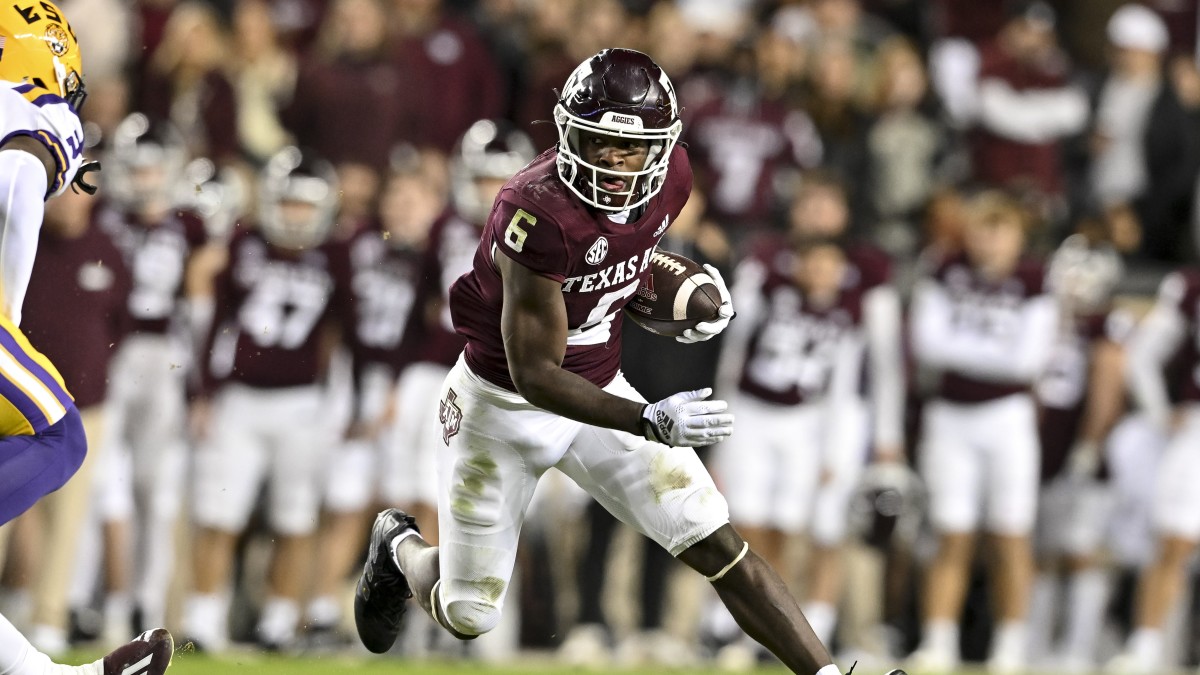These Running Backs Might Not Be on Packers’ Draft Board
GREEN BAY, Wis. – If the 2023 NFL Draft were only about 2023, Green Bay Packers general manager Brian Gutekunst could have saved his scouts a lot of time by telling them not to bother looking at running backs.
With Aaron Jones and AJ Dillon, few teams can match Green Bay’s one-two punch. However, Jones has a cap number of $17.2 million in 2024, his final year under contract. Dillon will be a free agent. With Patrick Taylor and Tyler Goodson rounding out the group, there’s not an obvious successor on the roster.
That means Gutekunst could be looking to replicate what he did in 2020, when he drafted Dillon in the second round even with Jones and Jamaal Williams leading the depth chart.
During the 18 drafts conducted by Gutekunst and his predecessor, the late Ted Thompson, the Packers drafted 12 running backs. That does not include Ty Montgomery, who was drafted as a receiver but made his mark in the backfield. That history helps narrow the field.
Height
The Packers don’t like short players. Jones was the shortest at 5-9 1/8.
Using a hypothetical cutoff of 5-foot-9 (without rounding), these players might not be on the board:
Texas A&M’s Devon Achane, 5-8 1/2.
Kansas State’s Deuce Vaughn, 5-5.
East Carolina’s Keaton Mitchell, 5-7 7/8.
Minnesota’s Mo Ibrahim, 5-7 3/4.
Weight
Probably because the Packers have to account for cold-weather games and the need to play physically, the Packers haven’t gone the scat-back route. Jonathan Franklin, a fourth-round pick in 2013, was the lightest at 205 pounds.
Using a hypothetical cutoff of 200 pounds, these players might not be on the board:
Alabama’s Jahmyr Gibbs, 199.
Texas A&M’s Devone Achane, 188.
Kansas State’s Deuce Vaughn, 179.
East Carolina’s Keaton Mitchell, 179.
Hand Size
Big hands mean better ball security – especially when the weather gets cold. All 12 of Green Bay’s backs had hands larger than 9 inches with the exception of 2017 seventh-round pick Devante Mays, who tipped the scales at 224 pounds.

Using a hypothetical cutoff of 9-inch hands, these players might not be on the board:
Texas A&M’s Devone Achane, 8 1/2.
Pitt’s Israel Abanikanda, 8 1/4.
Kentucky’s Chris Rodriguez, 8 1/2.
Louisville’s Tiyon Evans, 8 1/2.
We’ll revisit this later.
RAS, 40 and Shuttle
Green Bay is a stickler to testing numbers at many positions. Running back, really, isn’t one of them.
The 40-yard dash does seem to matter. The historic Scouting Combine average in the 40 in 4.59 seconds. All but burly Eddy Lacy (4.64) beat that mark. Speedsters aren’t required, though. The fastest time, produced by Franklin and Jones, was 4.49.
Oklahoma’s Eric Gray (4.62) and Georgia’s Kenny McIntosh (4.62), two of the top pass-catching backs in the draft, ran disappointing 40s. USC’s Travis Dye ran a molasses-slow 4.78 at 201 pounds.
Green Bay likes the 20-yard shuttle at many positions. The historic Scouting Combine average for a running back is 4.29 seconds. Half its drafted backs beat the time, half fell short.
UCLA’s Zach Charbonnet (4.46) had the worst shuttle among the top backs. Only Mays has a slower time among the Packers’ backs that did the test, though Jamaal Williams’ time was 4.43.
Of note, Gray ran his shuttle in an excellent 4.10 while McIntosh posted a horrendous 4.69.
Relative Athletic Score is a formula that combines a player’s height, speed, 40 time and other testing results into one position-based score ranging from 0 (terrible) to 10 (elite). It’s an especially good formula at running back, where your typical 200-pound running back is going to run faster than your typical 225-pound running back.
Jones (9.21) and Dillon (9.15) posted elite scores; Lacy and Jamaal Williams posted below-average numbers.
The best four RAS in this year’s class belong to Texas’ Bijan Robinson, followed by Illinois’ Chase Brown, Pitt’s Israel Abanikanda and Tulsa’s Deneric Prince. McIntosh’s RAS was 4.09, the lowest among the draft-worthy backs.
Ultimately, The Best Running Back Fits
The three backs drafted by Gutekunst were Dexter Williams, AJ Dillon and Kylin Hill. They all had 9 5/8-inch hands. So, let’s use that as a starting point.
Three backs had hands of 10-plus inches. Here they are, along with their other key testing numbers.
Tulane’s Tyjae Spears: 4.52 40, 4.32 shuttle.
Illinois’ Chase Brown: 4.43 40.
Mississippi’s Zach Evans: 4.50 40, 4.25 shuttle.
Four other backs had hands of at least 9 5/8 inches. Here they are, with their testing numbers:
Texas’ Bijan Robinson: 4.46 40.
UCLA’s Zach Charbonnet: 4.53 40 to perhaps offset 4.46 shuttle.
Oklahoma’s Eric Gray: 4.62 40 but an elite 4.10 shuttle.
Texas’ Roschon Johnson: 4.58 40 at 219 pounds.
All seven of the big-hands backs should be on the Packers’ board.
Finally, moving the hands to 9 1/2 inches, Auburn’s Tank Bigsby ran a solid 4.56 40.
Due to injuries, UAB’s DeWayne McBride and Syracuse’s Sean Tucker, both of whom possessing 9 1/2-inch hands, don’t have testing numbers. McBride worked out on Friday and Tucker will work out on Monday.
Green Bay Packers Free Agency and Draft News
Are the #Packers going to draft 10-11 of the players who they hosted for predraft visits? No, of course not, but this new seven-round mock draft provided a fun way to look at that list of players and the team's needs.https://t.co/whzQBgNObl
— Bill Huber (@BillHuberNFL) April 21, 2023
The quarterbacks who might not be on the board
Packer Central’s all-predraft visits mock draft
Packer Central’s eighth seven-round mock draft
Placing the Packers’ predraft visits in draft tiers
Should first-round history impact Packers’ decision at tight end?
